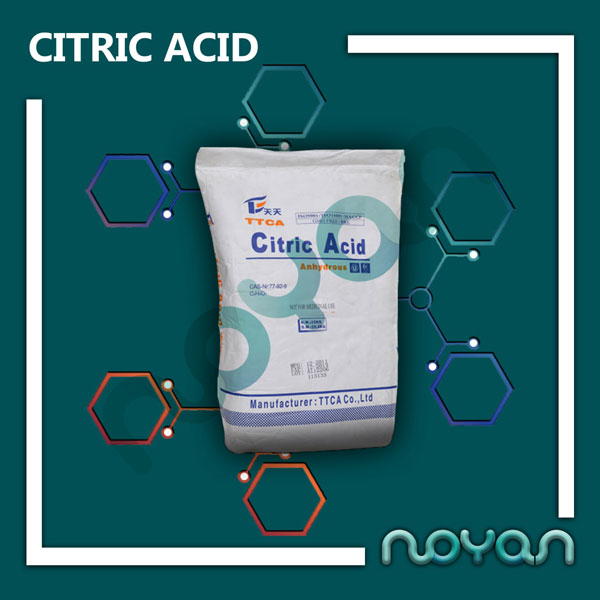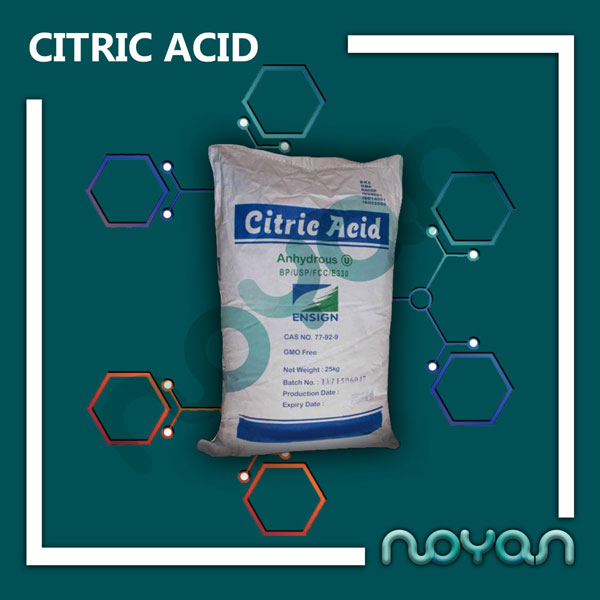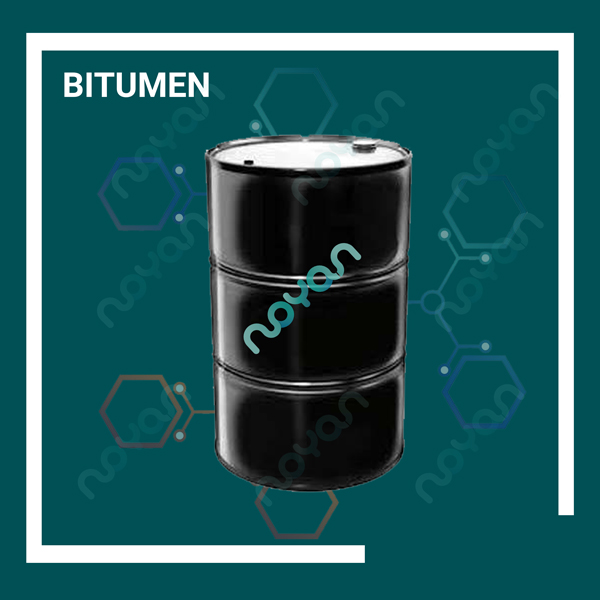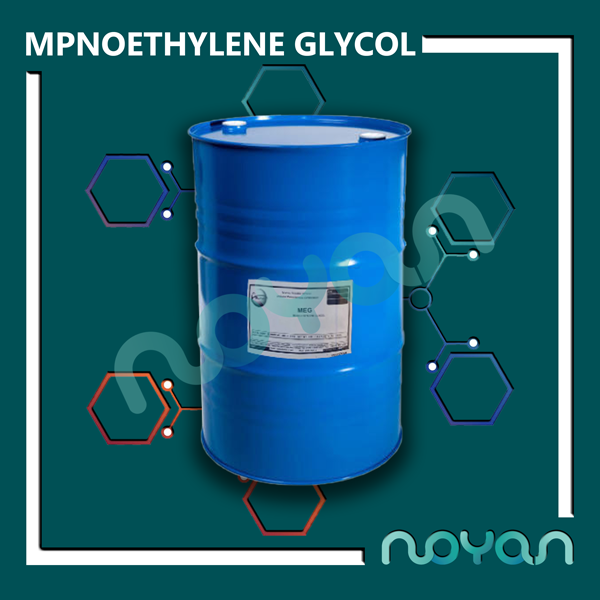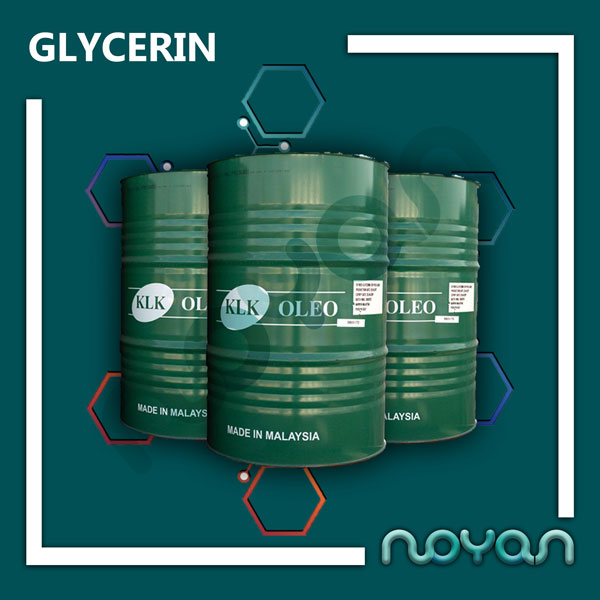Dry and juicy citric
Citric acid (lemon essence) with the chemical formula C6H8O7 is one of the weak organic acids found in lemons and oranges. One of the major producing countries is China. Citric acid is used in the beverage, juice, cosmetics and pharmaceutical industries, and in addition to flavoring, it also regulates the pH. Dry and juicy citric acid of lemon essence is crystalline, coarse, colorless, opaque, odorless, sour-tasting and pleasant. This acid melts at 15 ° C without water. Crystallized citric acid can be easily stored without spoilage. This acid has many uses, especially in the dyeing of fibers with a red grain composition. Citric acidity is due to the presence of three carboxy groups that can lose protons. Citric acid ion is known as citrate. Citrates are good buffers for controlling the pH of acidic solutions. Citrate ion forms citrate with many metal salts, the most important of which is calcium citrate (lemon essence), which is used to keep food from spoiling and making it taste good. Citrate ions can form chelating compounds with metals. At room temperature, citric acid is a white crystalline powder that can be present in either anhydrous or aqueous forms. The anhydrous form is formed by the crystallization of citric acid in hot water, while the aqueous form is formed by its crystallization in cold water. The one-water form becomes anhydrous by heating at 47 ° C. Citric acid decomposed at temperatures above 175 degrees. Citric acid is mainly used as a food preservative and food seasoning. Citrate salts with various metals are used as food aid in sick people. The buffering properties of citrates are used to control the pH of household cleaners. Citric acid is used in detergents because of its ability to form chelates with metals. By combining with metal ions, this substance prevents them from being disturbed in combination with detergent cleaning components. Citric acid is also used in medicine and is known as a safe substance for consumption in food. Chemical name: citric acid. Synonyms with citric acid: citric acid, lemon essence, citric acid, citric acid, tricarboxylic acid, hydroxypropane, product grade: industrial citric acid, laboratory citric acid (oral) Types: dry citric acid (citric acid anhydrosis), citric acid Aqueous (citric acid monohydrate) Molecular formula: C6H8O7 Purity: Citric acid 98% Molecular mass: 192.124 g / mol (anhydrous) 210.14 g / mol (monohydrate) Appearance: Solid white crystal Melting point: 153 ° C Boiling temperature: 173 ° C Celsius Solubility in water: 59 Differences between dry and aqueous citric acid There are two forms of aqueous citric acid (monohydrate) and dry citric acid (without anhydrous), the difference between the two acids is one in mesh, ie their granulation Is that crystalline and dry hydrated citric acid is a powder and another difference in their processing is monohydrate (aqueous citric acid) is formed from the crystallization of cold water and that hydrate (dry citric acid) is formed from the crystallization of hot water. Dry citric acid Mostly acidic and flavoring regulator, optimal aromatic booby and optimal shine retainer (refrigerated fruit coating) Juicy juicy citric acid can be used in juices or all liquids that need sour taste. Lemon essence, which is an edible acid, is one of the most important organic acids used in various industries, especially food and medicine; So that its consumption in food industry is more than 70%, pharmaceutical 12%, chemical 11%, leather 4%, cosmetics 2% and other industries 1%. It is usually a food additive that has the function of flavoring in foods containing vitamin C. Used for the outer layer of candies in the form of white powder. • Used as a preservative in the production of sausages. • Used in flour and bread industries in order to increase the quality and durability of the product. Used to create a sour vinegar-like taste in the production of olives and other pickles. In addition to flavoring, lemon essence also regulates acidity and pH. In the food industry, this acid is used in desserts, gels, cakes and pastries, biscuits, candies, chocolates, canned foods, soft drinks, essential oils, jams, marmalades, artificial gums and ice cream. In frozen foods, fats and oils, it acts as a pH regulator and creates a salt complex between citrates and trace metals as an antioxidant and preservative, prolonging the shelf life of frozen fish and seafood. • Used in cosmetics and pharmaceutical industries in cosmetics, emollients, ointments and creams, detergents and disinfectants, blood storage and detergents. • Due to the fork property of citric acid, which causes better digestion and absorption of minerals, especially calcium supplements; It is used to make calcium supplements. It is also used in products that are used to soften water. As a result, this acid is also used in washing powders and soaps. • It is also used in the formulation of cosmetic products. For example, it is used to regulate the pH of metal ions in the antioxidant system of acidic hair washes. It is used in anti-dandruff shampoos in the amount of 0.25 to 1.86% to adjust the pH and improve radiance and clarity. • In the preparation of anti-inflammatory solutions
